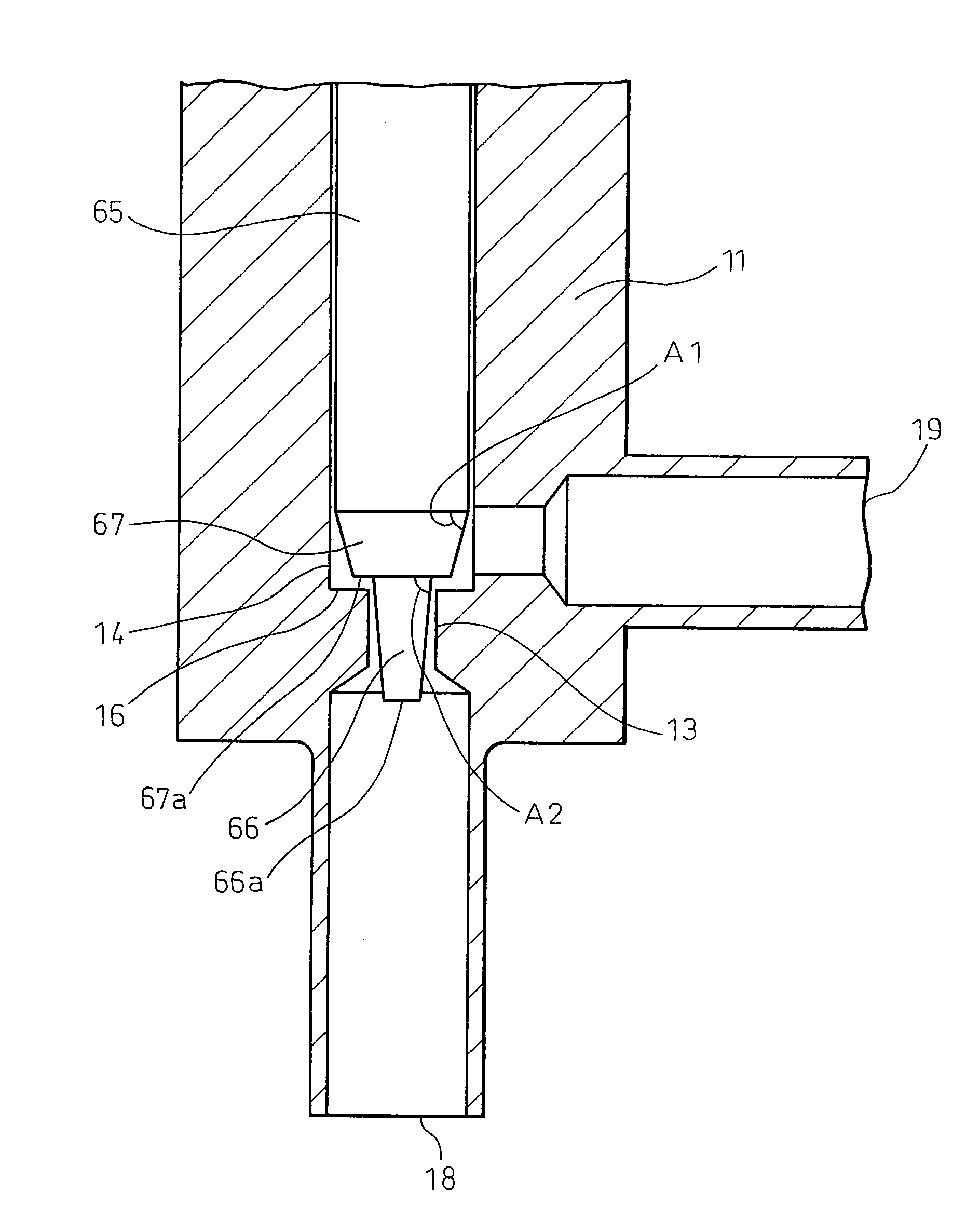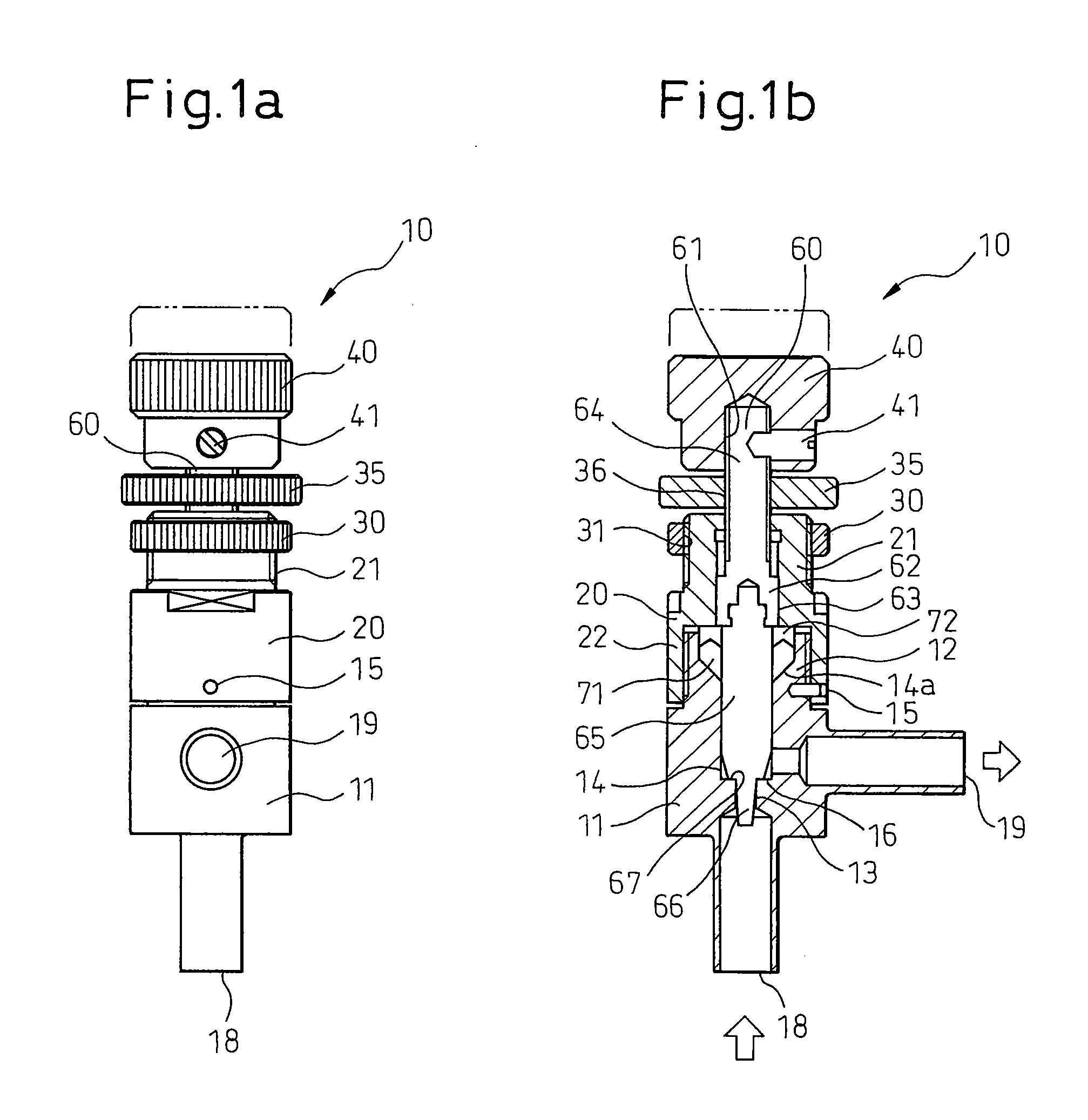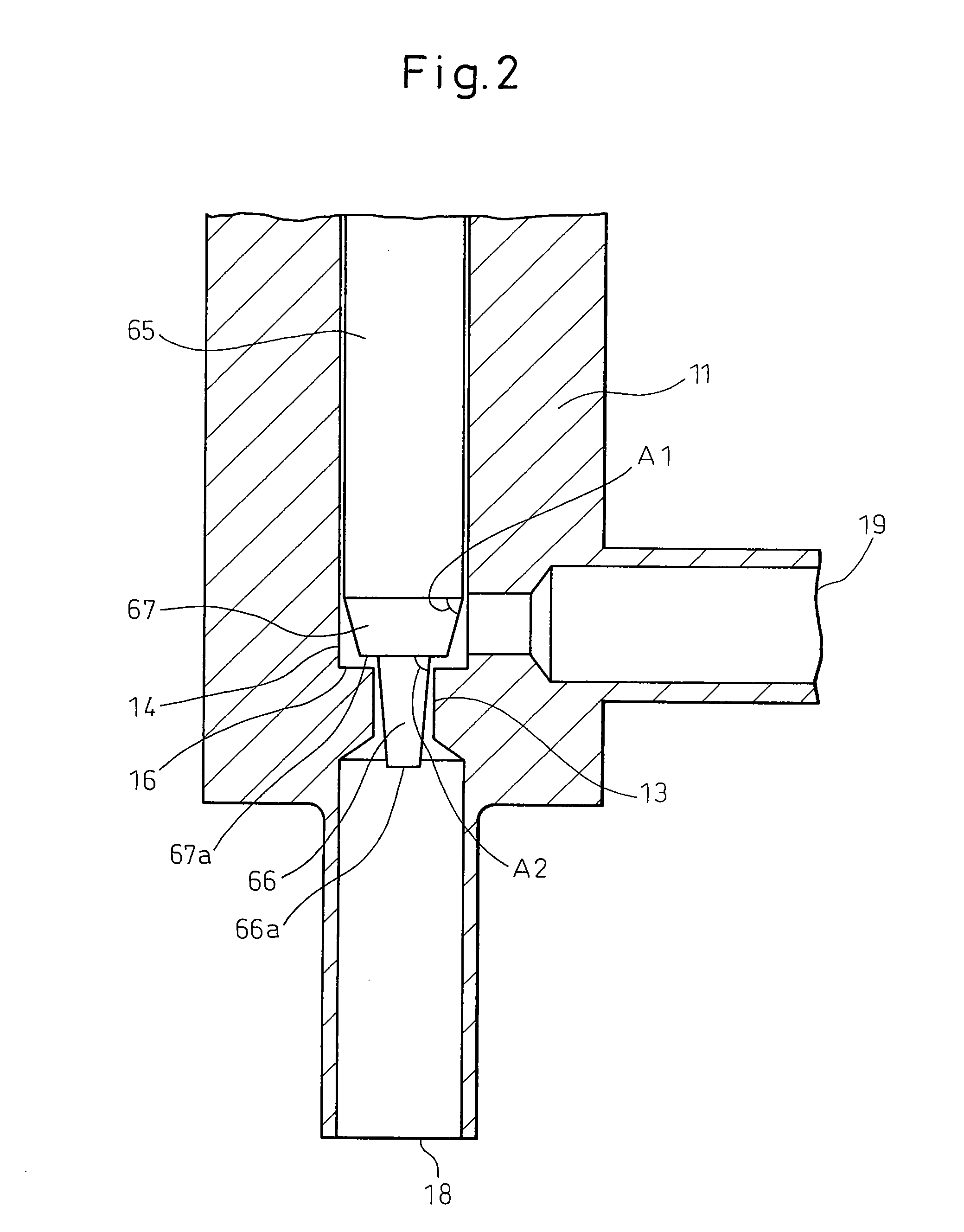Flow Rate Regulation Valve
a flow rate regulation and valve body technology, applied in the direction of engine components, pipe elements, mechanical equipment, etc., can solve the problems of adversely affecting the yield of the semiconductor device to be manufactured, and the inability to obtain a comparatively compact flow rate regulation valv
- Summary
- Abstract
- Description
- Claims
- Application Information
AI Technical Summary
Benefits of technology
Problems solved by technology
Method used
Image
Examples
Embodiment Construction
[0031]The embodiments of the invention are described below with reference to the accompanying drawings. In the drawings, similar component members are designated by the same reference numerals, respectively. To facilitate understanding, the scale of these drawings has been appropriately changed.
[0032]FIG. 1a is a front view of a flow rate regulation valve according to an embodiment of the invention, and FIG. 1b a side sectional view of the flow rate regulation valve according to an embodiment of the invention. As shown in these drawings, the housing of the flow rate regulation valve 10 according to the invention is configured of a lower portion 11 and an upper portion 20. The lower portion 11 of the housing is formed with an inlet 18 and an outlet 19. The inlet 18 and the outlet 19 communicate with each other in the lower portion 11 through a valve hole 13 and an axial hole 14 described later.
[0033]As can be seen from FIG. 1b, a lower sleeve 12 that is narrower than the lower portio...
PUM
 Login to View More
Login to View More Abstract
Description
Claims
Application Information
 Login to View More
Login to View More - R&D
- Intellectual Property
- Life Sciences
- Materials
- Tech Scout
- Unparalleled Data Quality
- Higher Quality Content
- 60% Fewer Hallucinations
Browse by: Latest US Patents, China's latest patents, Technical Efficacy Thesaurus, Application Domain, Technology Topic, Popular Technical Reports.
© 2025 PatSnap. All rights reserved.Legal|Privacy policy|Modern Slavery Act Transparency Statement|Sitemap|About US| Contact US: help@patsnap.com



